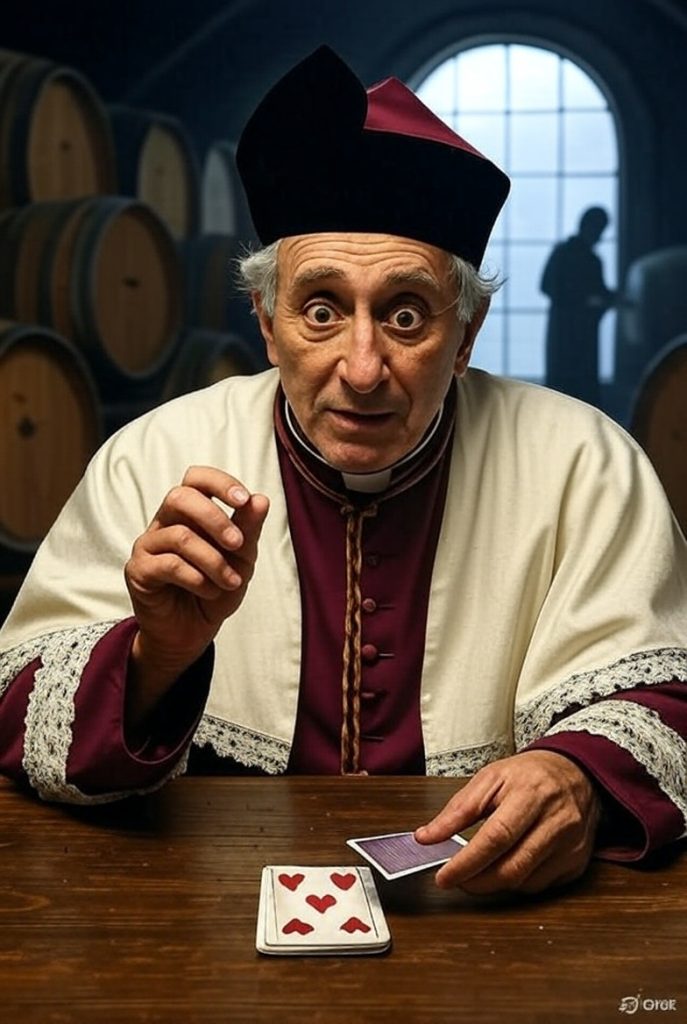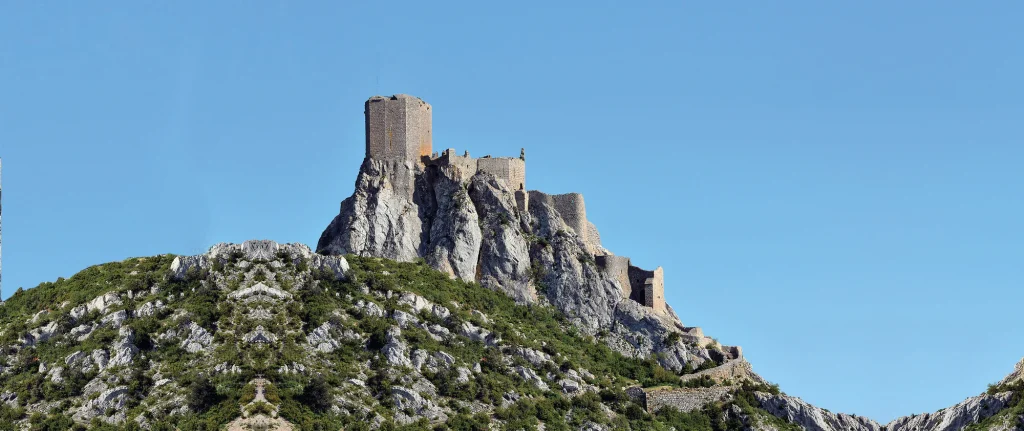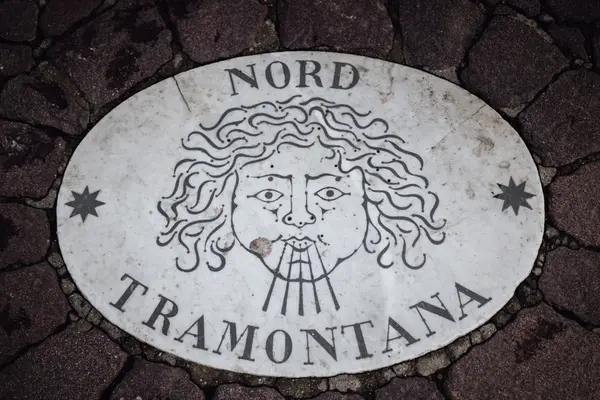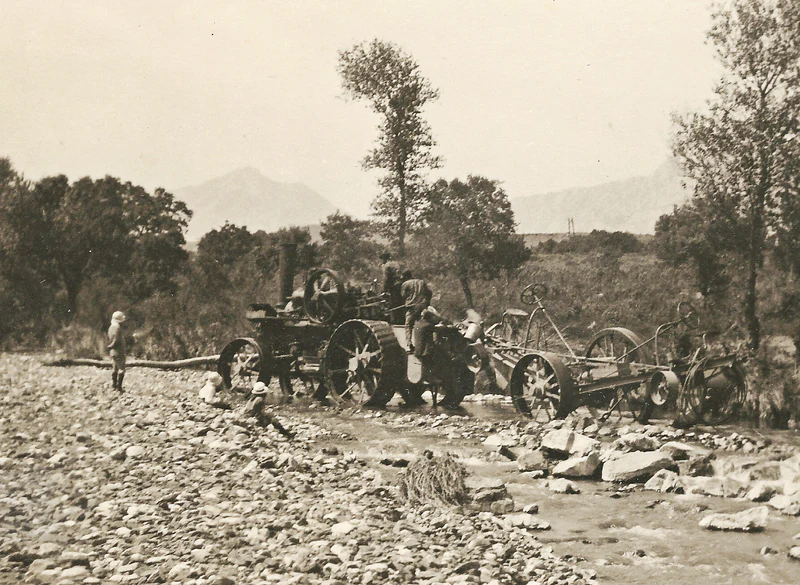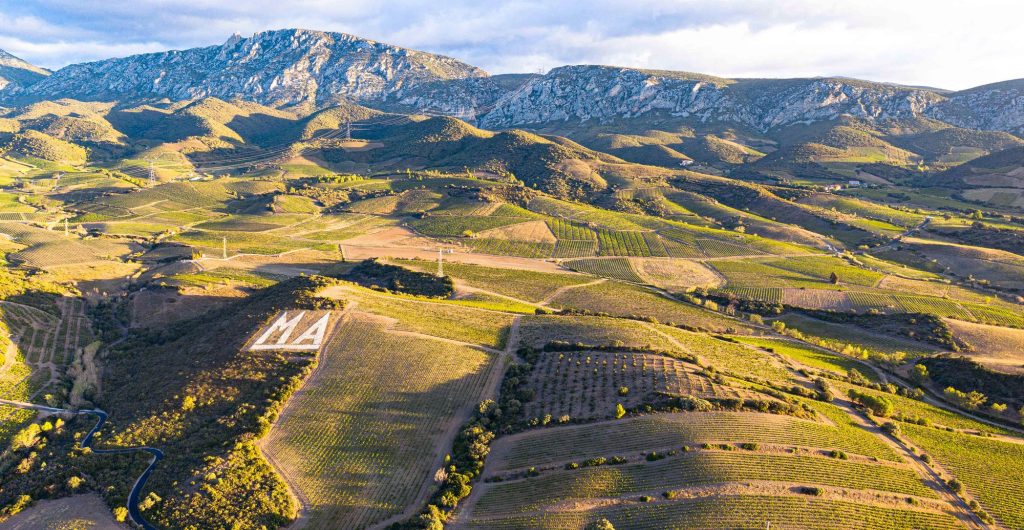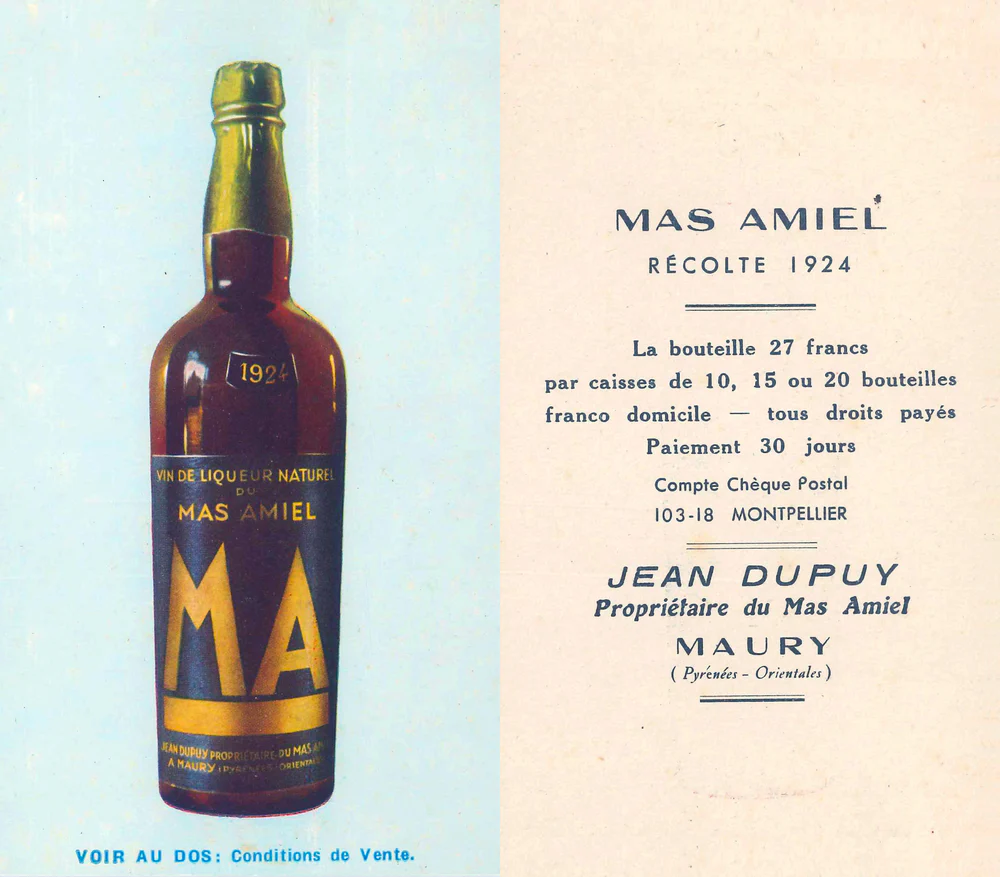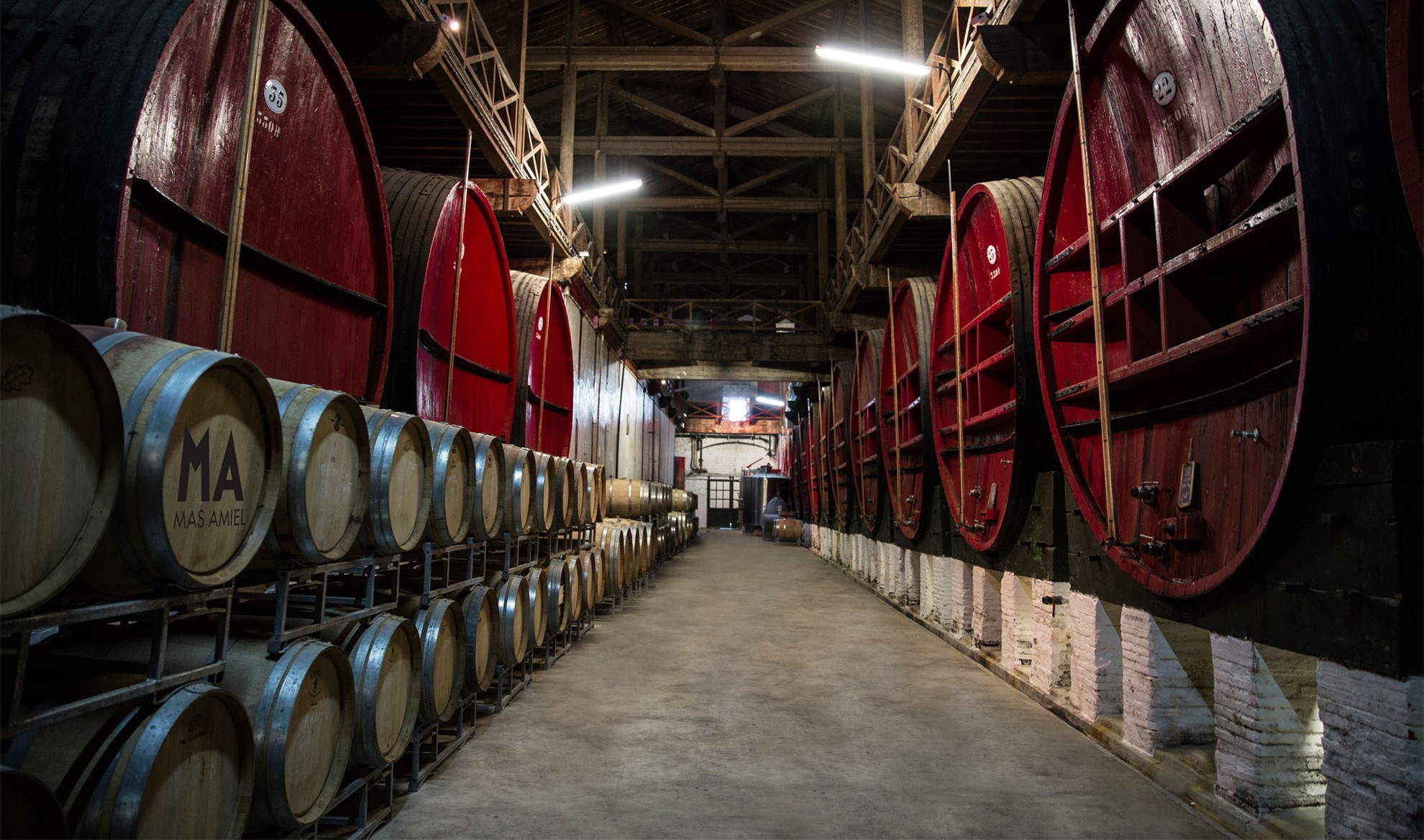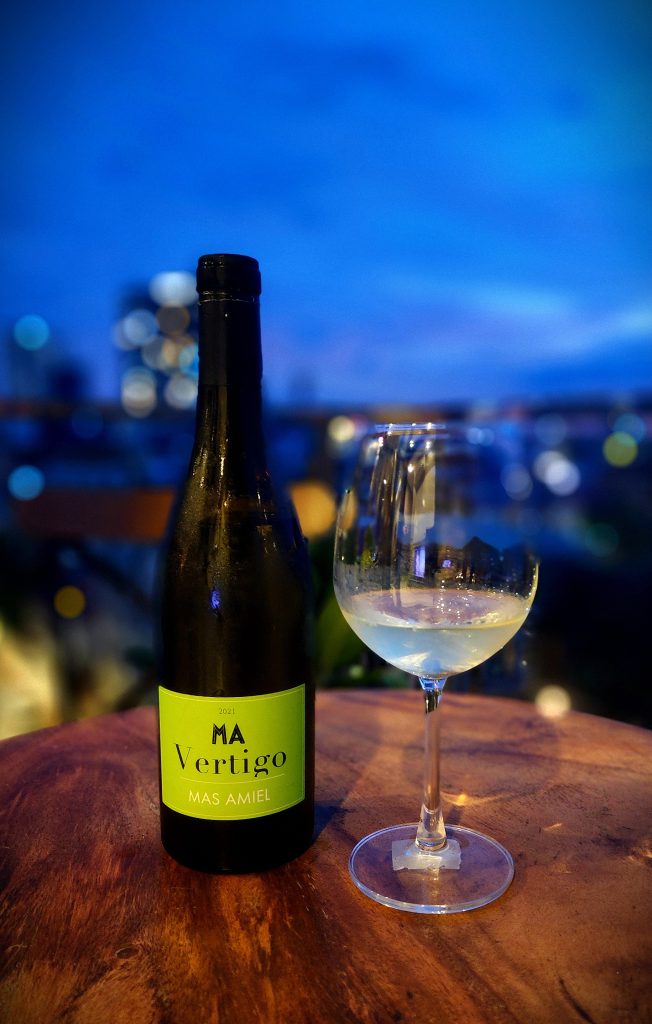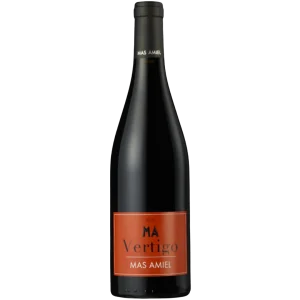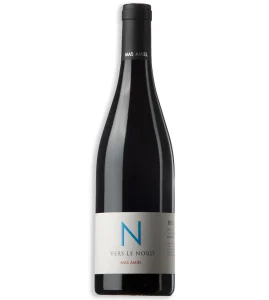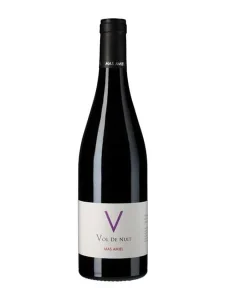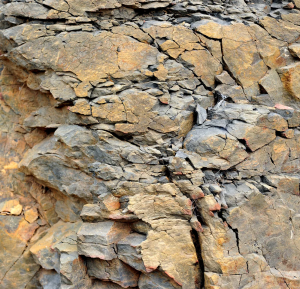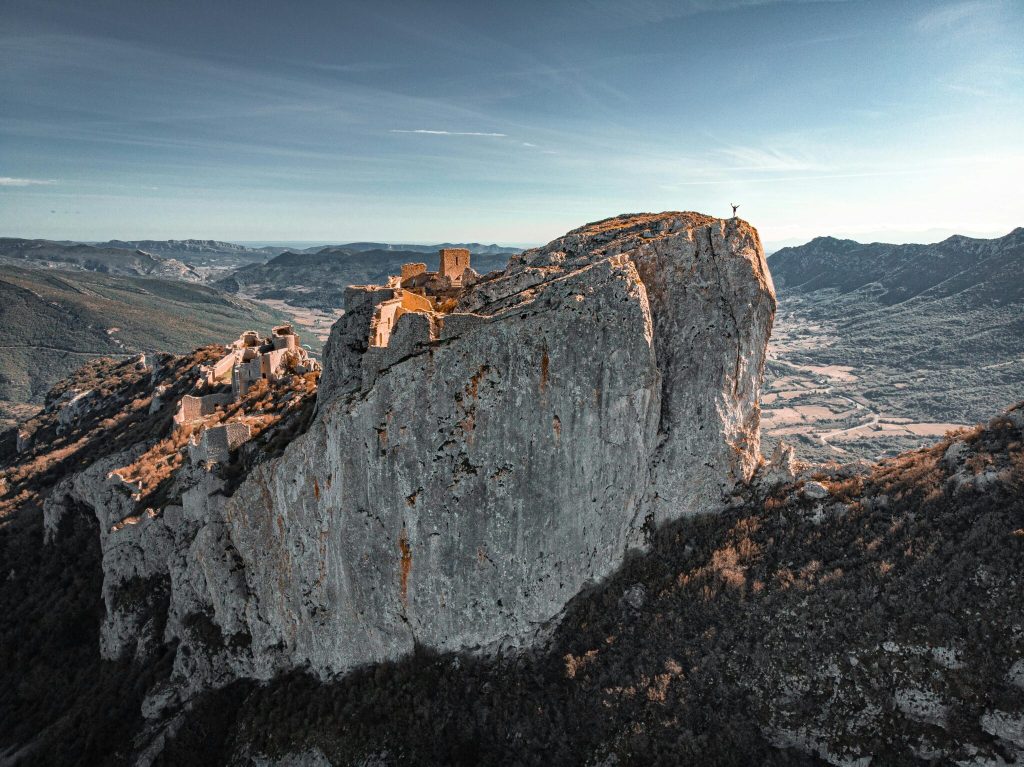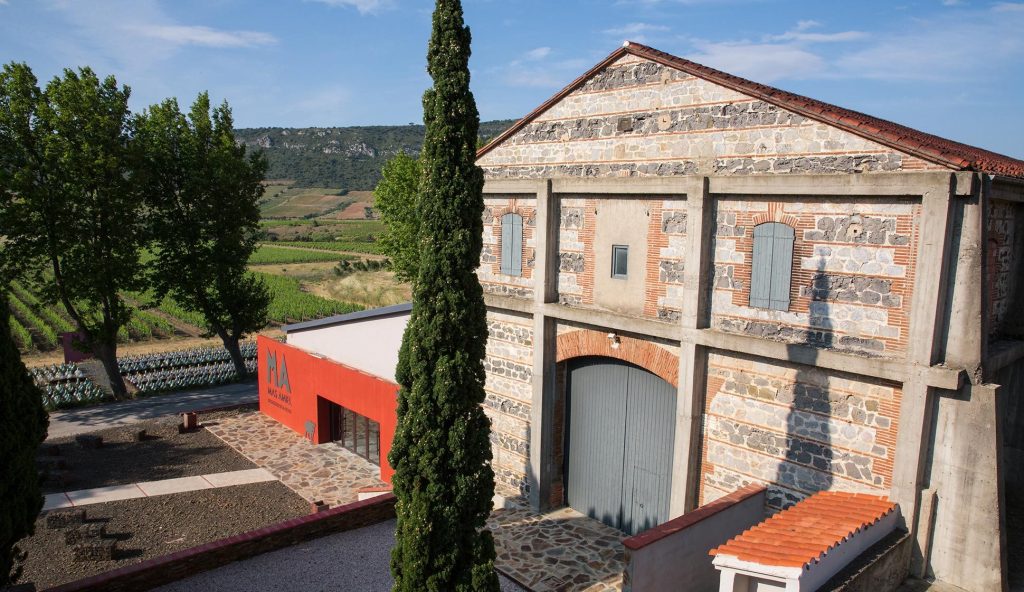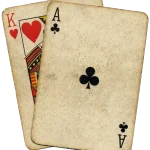The Bishop with the Bad Hand
The Maury AOC wine region in Roussillon, southwest France, lies deep in rugged Cathar country; It has a rich history of grape growing and wine production dating at least as far back as the time of the Ancient Greeks (600 BCE). When the Romans arrived (125 BCE), wine from this area already enjoyed a fine reputation well beyond its borders.
Over a period of 5000 years, these lands have known the cultural influences of the Iberians, Celts, Greeks, Romans, Germans, and Arabs before being annexed into the Kingdom of France in the 8th century, by Pepin the Short, father of Charlemagne. A century later, control of the region would continue to fluctuate between the Catalan kingdoms of Aragon and Majorca, until the 17th century.
According to Master of Wine Clive Coates, Maury’s winemaking history is influenced by the fact that the Roussillon region was a part of the Kingdom of Majorca (and later the Crown of Aragon), up until 1642, when a revolt against the Spanish crown brought French forces into the region.
The 1659 Treaty of the Pyrenees officially brought the area under the French crown. However, to this day, the mix of Spanish and French influence can be seen in the winemaking of Maury, with Spanish grape varieties used to make wines as well as the more traditional French varieties.
The Maddening Wind
The Tramontane howls through here; the very same wind Victor Hugo said would send him ‘barking mad’ in “Les rayons et les ombres” (1837). The Tramontane blows into these valleys a stranger; it leaves with the moaning souls of all but the most stoic, their claws dug deeply into the land.
Tramontane is a northerly wind named by Marco Polo in the 13th century; the name was later given to the North Star (Tramontana). Eventually, the expression “to lose the tramontana” was used to describe someone who had become disoriented (as in lost their sense of true north), or to have even lost one’s mind. It has been said that the Tramontane, with relentless ambivalence, will disorient one’s passions, leaving only a broken trail of bad decisions to be forensically picked over by what emotions are left behind.
The Cathars (The Pure Ones) were a dualist medieval religious sect that flourished in this region. During the 12th century, they challenged the authority of the Catholic Church. The Cathars believed that God created heaven and Satan created earth, and that human beings were the trapped souls of fallen angels. To the Cathars, this was not hell on earth but the very incarnation of hell itself, and they were doomed not only to live here, but to be reincarnated over and over again, enduring this hell until they renounced all material things, including their physical being.
The terrain here is no Garden of Eden, it is hungry, all rock, stone and schist, vines strain to survive and bear the scars; berries are tiny, yields miserly, the sort of land that will break your spirit and then break your back. In Maury, vignerons search for expressions of truth in their wines; winemaking here is not about glory, it is about suffering for your art.
“The heart has its reasons which reason knows nothing of… We know the truth not only by the reason, but by the heart.”
-Blaise Pascal
Much of the winemaking in this area was produced and maintained by monks; with the rise of Christianity in the Middle Ages, local they codified winegrowing and turned it into a trade.
In 1816, the Bishop of Perpignan, in a somewhat less than ecclesiastical pursuit, lost his vineyard in a card game to the engineer Raymond Etienne Amiel. Once deed and title changed hands, the property known as Domaine de Goudous became Mas Amiel.
The property was purchased by Olivier Decelle in 1999, who also owns Châteaux Jean Faure in St. Emilion, Haut Maurac in the Médoc, Haut Balet in Fronsac, and 6 hectares of Savigny les Beaune and Marsannay in Burgundy. Decelle also operates as a négociant dealing in many Burgundy crus. With Decelle as proprietor, Mas Amiel renovated its historic vineyards, adopted biodynamic farming, and broadened its dry wine selection.
A large estate of 170 hectares, Mas Amiel sits in the Agly Valley outside the commune of Maury, to the northwest of Perpignan; it boasts the largest cellar in the region. Since 2003, the wines have been made by Nicolas Raffy, a daring young winemaker with a determination to have his wines speak for themselves.
“Life is not a matter of holding good cards, but of playing a poor hand well,”
-Robert Louis Stevenson
Recent tasting:
Mas Amiel ‘Vertigo’ Blanc 2021
Grenache Blanc, Macabeo, Roussanne, Marsanne
Cotes du Roussillon
Younger vines that are grown on schist-laden slopes with limestone and deep clays. The vines are aged in vats and left on lees till bottling.
Nice freshness on the bouquet with aromas of cut straw, wild honey, orange blossom, and a touch of wet stone. On the palate, the wine is crisp and clean with fresh primary fruit characters of spiced pear and baked apple, with notes of kiwifruit, green mango, and papaya. There are also some more complex hints of rolled oats and granola from the lees ageing. The wine finishes with some fine, impressive minerality, and there is length and still some vibrancy. A dry white from Roussillon that impressively over-delivers on the quality-to-price scale.
Older tasting notes:
Mas Amiel ‘Vertigo’ Rouge
Grenache Noir, Carignan, Syrah
The younger vines employed to produce the grapes for this wine are grown on schist-laden slopes over deep limestone. The wine is aged in large oak vats for 6 months, capturing the fresh, clean, pure fruit characters.
Aromas of field herbs, crushed berries, raspberries, plum, with pan spices, fruit mince and touches of earthiness and sweaty leather.
On the palate, the wine is dry, fuller-bodied and with a juicy core of primary fruit. The Carignan gives the wine a rustic charm, whilst the Grenache dials up the ripe fruit, and the Syrah adds body, length, and spice. Limestone soils lend the fruit a characteristic coolness on the palate, while offering exceptional length and delightful minerality on the finish. An impressive and inexpensive wine, this is terrific value.
Mas Amiel Vers Le Nord
Grenache 92%, Syrah 8%
A single parcel of grapes taken from the 2-hectare La Devese vineyard, which has a complex array of soils ranging from sandstone schist, bluish limestone, and a fringe of iron clay. The wine was aged (with regular topping) in concrete vats for about 12 months before being bottled.
Vibrant colour, with exotic aromas of blood orange and a touch of fruit mince spices over ripe forest berries. A pure, primary fruit-driven wine with juicy blood orange and black cherry fruit, it is focused and structured on the palate, with a mineral wash wrapped around the exceptionally clean fruit flavours. The wine has delightful length through the palate and a lingering aftertaste.
Mas Amiel Vol de Nuits
100% Carignan
Three parcels of old Carignan vines: Sainte Eugenie, 5,280 rootstock (1900), Mas Raphael, 3,300 rootstock (1925), Coll del Beou, 6,500 rootstock (1925). All taken from a vineyard rich in schist and micro-schist soils. Draft horses till these soils, and grapes are hand-picked.
Natural, indigenous yeast was used for fermentation in stainless steel tanks, whilst maturation took place in concrete ovate and elliptic vats until bottling. The wine underwent a 32-day maceration post-ferment to extract colour, structure and flavour.
An inky, dark, brooding colour to the wine, it shows heady, powerful aromas when vigorously swirled in the glass, aromas of plum, sour cherry, licorice, graphite, olive tapenade, thyme, axle grease, gun smoke and wild herbs.
The palate is plush and full without being fat; there is a lovely core of complex fruit wrapped in mineral acidity that winds around the wine before overwhelming it on the back palate. An excellent expression of the variety, the terroir, and their marriage in the winemaking.
Boney Ground
It was Friedrich Nietzsche who said, “For believe me! The secret for harvesting from existence the greatest fruitfulness and the greatest enjoyment is to live dangerously! Build your cities on the slopes of Vesuvius! Send your ships into uncharted seas!”
Karl Jung poetically wrote, “No tree, it is said, can grow to heaven unless it sends its roots down into hell.”
Whilst the legendary Chinese philosopher Lao Tzu is attributed with the saying, “The flower which blooms in adversity is the rarest and most beautiful of all.”
Here is a land of blood and bone, of steep slopes, rock, schist and marl, a baking sun and howling wind. The vines are tended by hands that are as gnarly and notched as the vines they nurture. Yields are extremely low, juice concentration is incredibly high, intense. The wines here are unique, the quality exceptional, the characters complex and extraordinary.
These are wines that are individuals, that sing songs of their place, their climate, their varieties and carry echoes of their past. I highly recommend you seek them out.

